Instant Connection for Pixel Streaming
— New Feature Automated Setup





Complete Guide to Unreal Engine
Complete Guide to Unreal Engine
Complete Guide to Unreal Engine
Published on December 9, 2023
Table of Contents
Introduction
Unreal Engine is a clear leader in the world of digital creation, extending far beyond just game development. Whether you're an aspiring game developer, an established studio, or a tech enthusiast looking to expand your skill set, mastering Unreal Engine opens up a world of possibilities. This guide will explore the importance of Unreal Engine across various industries, providing a comprehensive walkthrough for everyone—from beginners to advanced developers. Whether you’re searching for an Unreal Engine tutorial, a complete guide, or just want to dive deeper into this powerful engine, you’re in the right place.
The Evolution and Importance of Unreal Engine
Unreal Engine has come a long way since its initial release in 1998. What began as a groundbreaking tool for the first-person shooter Unreal has evolved into one of the most powerful and versatile game engines available today. Over the years, Unreal Engine has continuously pushed the boundaries of what’s possible in digital content creation, making a significant impact across multiple industries.
A Brief History
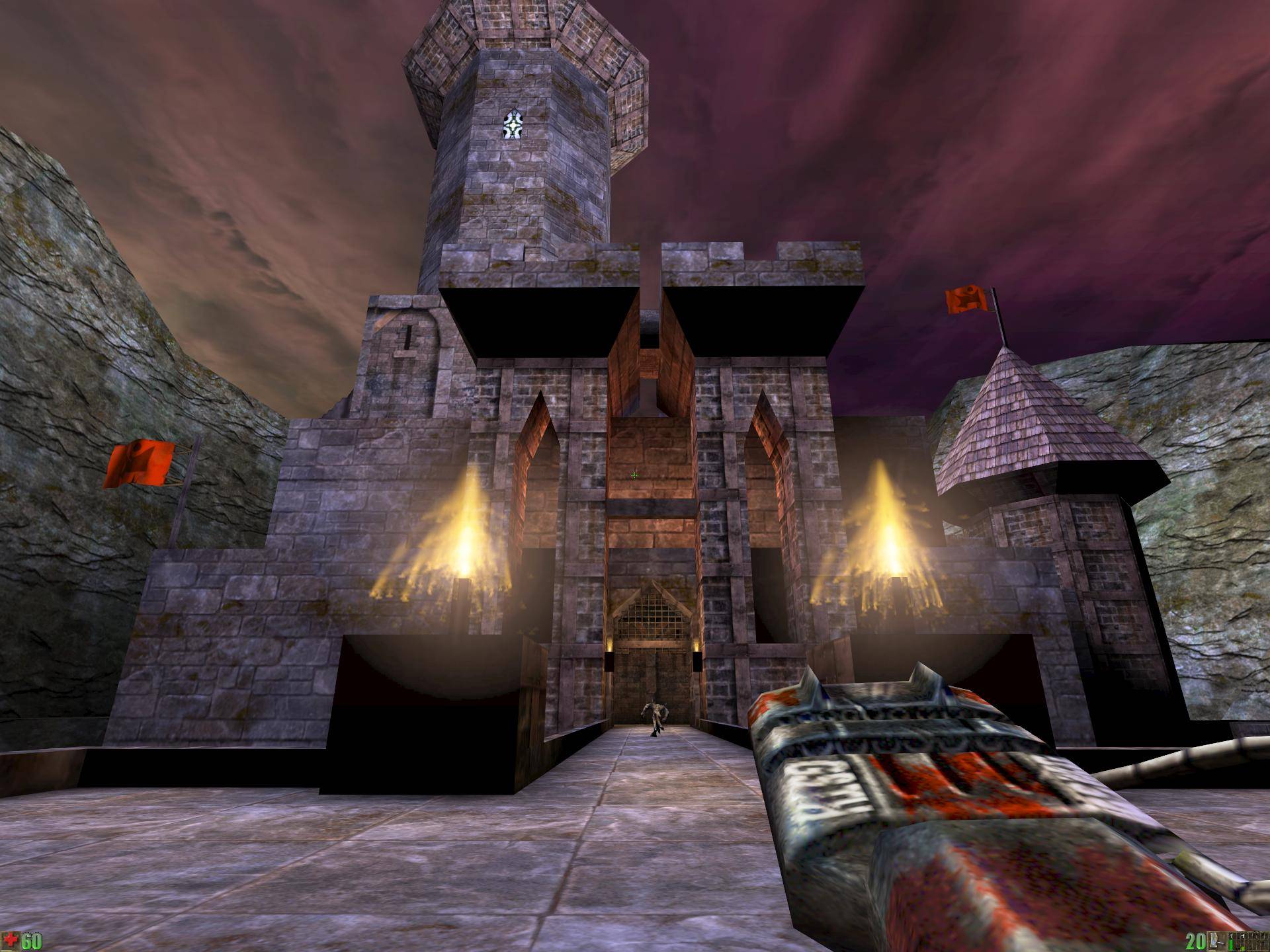
Unreal Engine’s journey started with its debut in the gaming industry, where it quickly gained popularity for its ability to create immersive, high-quality visuals and complex gameplay mechanics. The engine’s success in gaming laid the foundation for its expansion into other fields. Today, Unreal Engine is not only a staple in game development but also a key player in industries like architectural visualization and virtual reality (VR).
Expanding Beyond Gaming
While Unreal Engine remains a favorite among game developers, its applications have broadened dramatically. In the world of architectural visualization, Unreal Engine allows architects and designers to create photorealistic renderings and interactive environments, offering clients a virtual tour of their projects before construction even begins.
In the realm of virtual reality, Unreal Engine is setting new standards. Its real-time rendering capabilities and flexibility make it ideal for creating immersive VR experiences, from gaming to educational simulations.
Industry Impact
Unreal Engine’s influence is evident in the gaming industry from the games developed using this engine, but its impact goes far beyond gaming. The engine is increasingly being used in film production, automotive design, and even live events, thanks to its ability to render stunning visuals in real-time.
As Unreal Engine continues to evolve, its importance across various industries only grows. Whether you’re creating the next big game, designing an architectural masterpiece, or building a cutting-edge VR experience, Unreal Engine provides the tools and flexibility needed to bring your vision to life.
Benefits of Mastering Unreal Engine
Mastering Unreal Engine opens up a world of possibilities, not just for game developers but for creators across various industries. Whether you're crafting AAA games, architectural visualizations, or immersive VR experiences, Unreal Engine provides the tools you need to bring your visions to life. Here are some key benefits and applications of this remarkable engine:
Extensive Customizability: Unreal Engine is celebrated for its extensive and easy customizability. It gives developers a vast range of tools to create exceptional-quality content, whether you're working on a major game or a small project.
Cross-Platform Development: Unreal Engine supports multiple platforms, making it a versatile choice for developing content for various devices. From consoles to mobile devices, and even VR headsets, Unreal Engine ensures your project reaches its audience.
Industry-Leading Graphics: Unreal Engine is renowned for its out-of-this-world graphic quality, crucial for creating visually stunning and immersive experiences. Its advanced rendering capabilities make it the top choice for anyone aiming to deliver high-fidelity visuals.
User-Friendly Visual Scripting: Unreal Engine’s Blueprints feature allows developers to create interactive elements without the need for extensive coding. It’s an excellent resource for both beginners and experienced developers, enabling rapid prototyping and creative experimentation.
Real-Time Photorealistic Rendering: Unreal Engine excels at real-time photorealistic rendering, making it ideal for creating visually stunning and realistic environments while you are actively developing. This capability is especially valuable in fields like architectural visualization and virtual production.
Cloud-Based Performance: With the power of cloud computing, Unreal Engine can now run on virtually any device, eliminating hardware limitations. By leveraging Unreal Engine on Cloud Computer, you can optimize your workflow, collaborate seamlessly with teams, and scale your projects without being tied down by your local machine's specs.
While Unreal Engine offers extensive tools for cross-platform development, it’s worth comparing it to Unity, especially if you're looking to choose the best engine for your specific needs. Explore our comparison guide to see how Unreal stacks up against Unity.
Unreal Engine’s flexibility and power make it a critical tool in the modern creator’s toolkit. Mastering it not only enhances your ability to develop cutting-edge games but also opens doors to new opportunities in fields like architecture, VR, and beyond.
Learning Resources for Unreal Engine
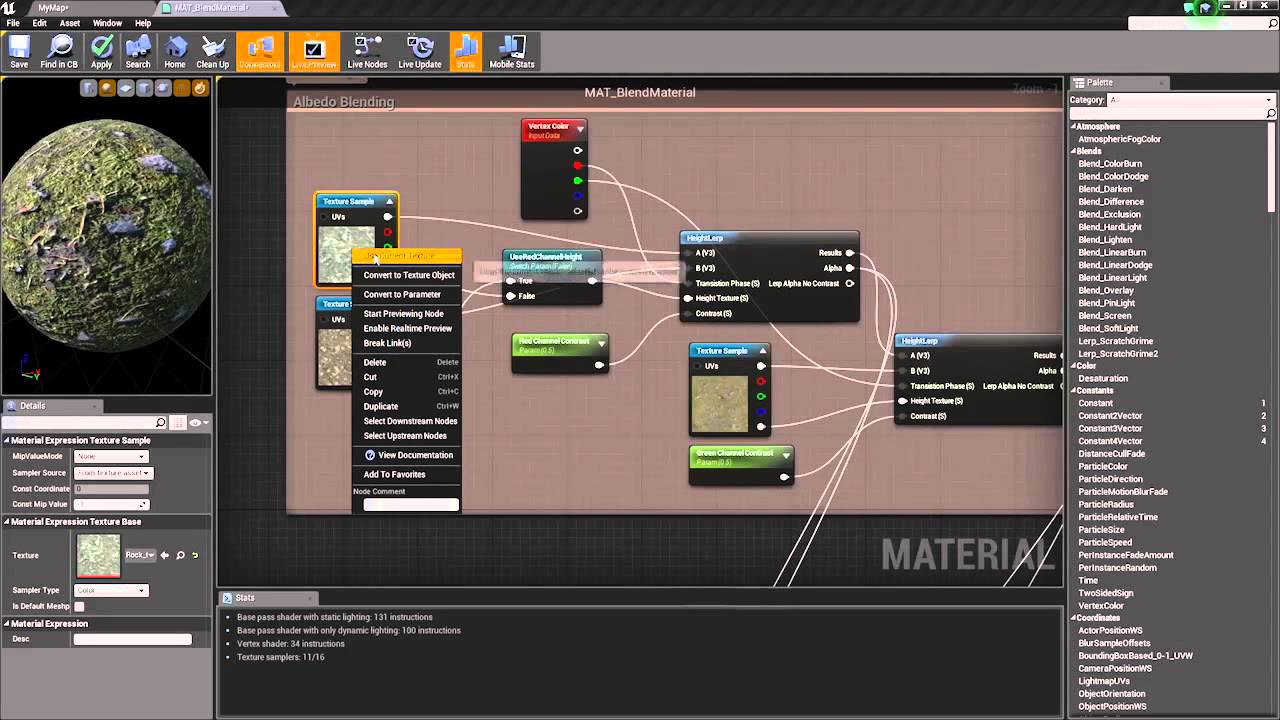
Mastering Unreal Engine opens up endless creative possibilities, whether you're developing games, creating architectural visualizations, or experimenting with virtual reality. To get the most out of Unreal Engine, it’s crucial to leverage the best learning resources available. Below, we’ve compiled a list of top courses, communities, YouTube channels, and official documentation to help you on your journey.
Top Unreal Engine Courses and Classes
For structured learning, online courses are an excellent way to build your skills. Whether you’re a beginner or looking to advance your knowledge, our curated list of the top courses enables mastering Unreal Engine, as it covers everything from the basics to advanced techniques. These courses provide step-by-step guidance and are designed to help you master Unreal Engine at your own pace.
Official Documentation
The Unreal Engine Documentation is the ultimate resource for developers at any level. It offers comprehensive guides on every aspect of the engine, from basic setup to advanced scripting. The documentation is frequently updated and maintained by Epic Games, ensuring that you have access to the latest features and best practices.
YouTube Channels
Visual learners often benefit from video tutorials, and there are several YouTube channels dedicated to Unreal Engine:
- Unreal Engine: The official Unreal Engine YouTube channel provides tutorials, live streams, and showcases of community projects. It’s a must-subscribe for anyone serious about learning Unreal Engine.
- Virtus Learning Hub: This channel offers a wide range of tutorials on Unreal Engine, covering topics from beginner basics to advanced game development techniques.
- Matt Aspland: Known for his concise and clear tutorials, Matt Aspland’s channel is great for learning specific aspects of Unreal Engine, particularly in Blueprints and game mechanics.
- Ryan Laley: Ryan Laley provides daily tutorials that focus on practical game development tips and tricks within Unreal Engine, making it a valuable resource for developers at all levels.
Online Communities

Being part of a community can significantly enhance your learning experience. Here are some of the most active Unreal Engine communities where you can ask questions, share your work, and learn from others:
- Unreal Engine Forums: The official Unreal Engine forums are a great place to connect with other developers, ask questions, and find answers to technical issues.
- Unreal Slackers (Discord): This is one of the largest Discord communities for Unreal Engine developers. It’s a lively space where you can chat with other users, share your progress, and get help in real-time.
- r/unrealengine (Reddit): The Unreal Engine subreddit is an active community where users post everything from tutorials and resources to questions and project showcases.
- ArtStation’s Unreal Engine Community: While ArtStation is primarily known as a portfolio site, it also has a strong community of Unreal Engine artists who share tips, tutorials, and feedback.
By utilizing these resources, you can accelerate your learning and become proficient in Unreal Engine more quickly. Whether you prefer structured courses, official documentation, community interaction, or video tutorials, there’s a wealth of knowledge available to help you on your journey.
Getting Started with Unreal Engine
Before diving into the details of Unreal Engine, it’s important to get familiar with the basics. Understanding the core components of the engine will set you up for success and help you avoid common pitfalls that beginners often encounter. Here’s what you need to know:
The Unreal Engine Interface
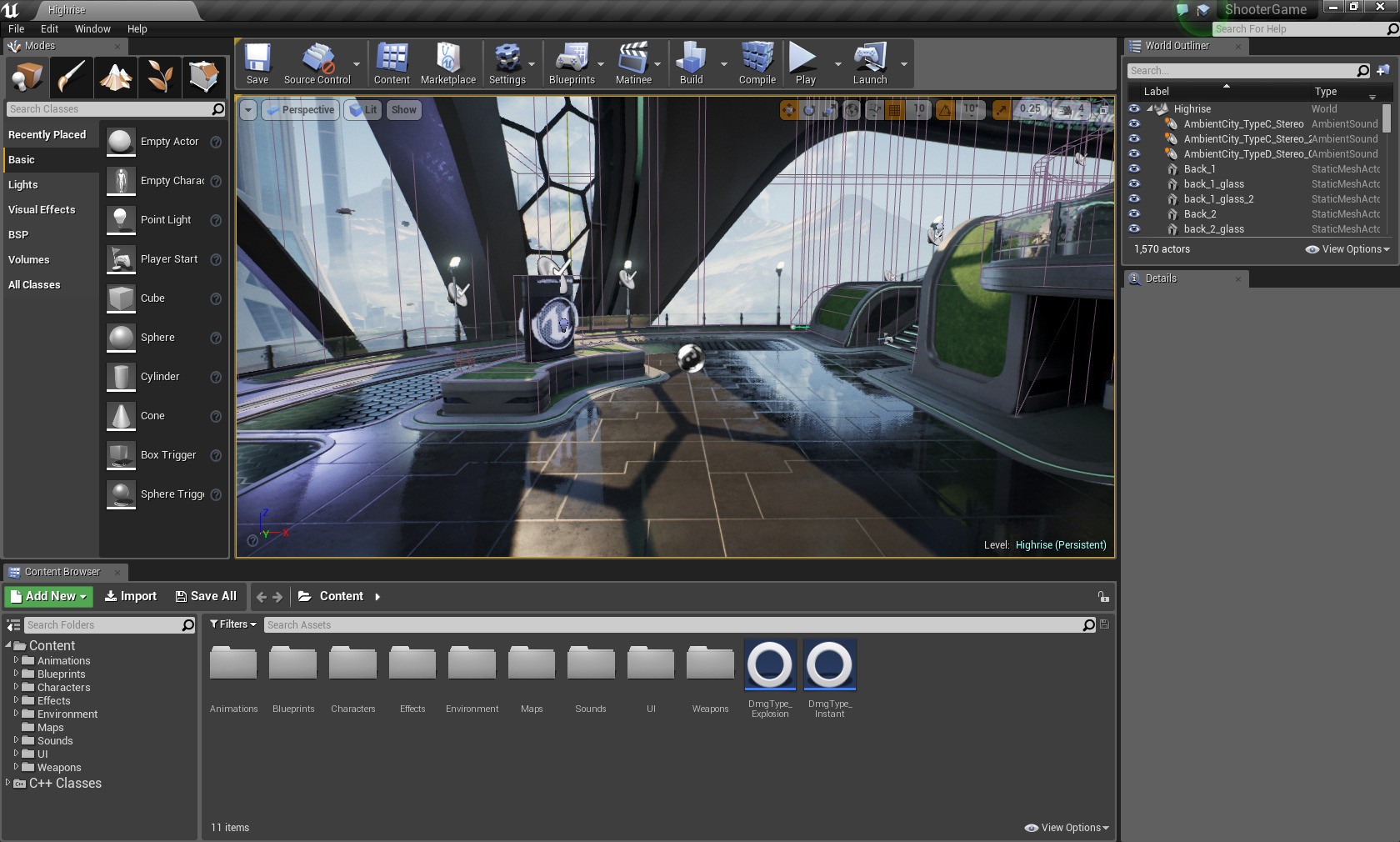
Unreal Engine’s interface is designed to be user-friendly, providing a seamless experience for developers. The key components of the interface include:
Start Menu: The Start Menu offers access to different engine versions and showcases projects created by the user. It also allows users to explore games developed by other creators.
Project Browser: After selecting the engine version, the Project Browser appears. This browser includes pre-modified game levels and enables users to create new projects for game development.
Toolbar: The Toolbar is a personalized section housing various tools and editors. Some of the key options include Quickplay, launch game functions, Blueprint, and Matinee Editor.
Viewport: The Viewport is where users can visualize their game creation. It adapts to the customized level of the game, and by clicking the “PLAY” button, users can interact with the game and view different game levels.
Avoiding Common Beginner Pitfalls
As you start exploring Unreal Engine, it's easy to make mistakes that can slow down your progress. Understanding and avoiding these common pitfalls will help you stay on the right track. For example, beginners often struggle with managing project organization or overcomplicating Blueprints early on. To help you navigate these challenges, we recommend checking out our guide on Top Mistakes Unreal Engine Beginners Make.
By familiarizing yourself with the interface and being aware of common challenges, you'll be better equipped to make the most of Unreal Engine's powerful features from the start.
Unreal Engine Fundamentals
Unreal Engine works through a set of tools and editors, including a graphics engine, online module, physics engine, sound engine, input, and gameplay framework. It provides developers with the means to create and manipulate assets, customize materials, and work with lighting for realistic game visuals. With many solutions to complex problems that are solved,
Essential Game Development Techniques
Once you’ve grasped the basics of Unreal Engine, it’s time to dive into game development techniques. Unreal Engine offers a wide range of tools and features to help you bring your creative vision to life. Here are some of the key techniques you’ll need:
3D Modeling
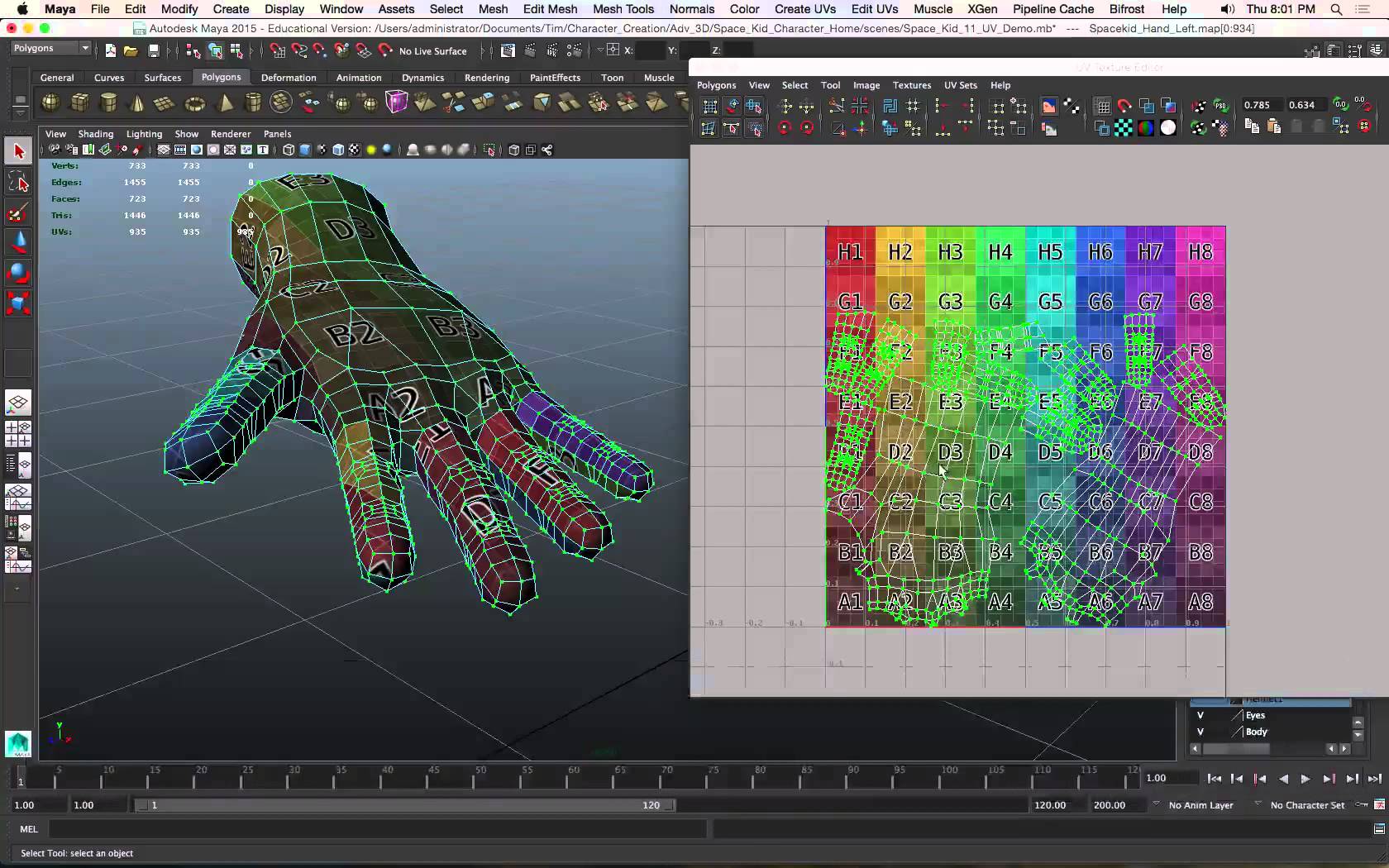
Creating 3D models is a fundamental part of game development. Unreal Engine provides robust tools and editors to design and manipulate 3D assets, allowing you to enhance the quality and detail of your game environments and characters. Whether you’re sculpting intricate characters or designing expansive landscapes, Unreal Engine has the capabilities to support your vision.
For those who also use Blender in their workflow, it’s worth exploring how Unreal Engine compares to Blender in terms of 3D modeling capabilities. Our Unreal Engine vs Blender Comparison Guide offers insights into the strengths of each tool, helping you choose the best one for your specific needs.
Animation
Unreal Engine streamlines the animation process by offering built-in systems that smoothly integrate with other parts of the engine. This integration eliminates the need to import animations from external sources, saving you time and ensuring that your animations are perfectly in sync with your game’s mechanics. From character movements to environmental interactions, Unreal Engine’s animation tools help you create fluid, lifelike animations.
Level Design
Level design is a critical aspect of creating dynamic and engaging game environments. Unreal Engine provides powerful tools to build and customize levels, allowing you to craft visually appealing and immersive worlds. Whether you're designing a simple arena or a complex open world, Unreal Engine’s level design tools give you the flexibility to create environments that enhance gameplay and captivate players.
Exporting and Importing Assets
In the game development process, it’s often necessary to move assets between different tools. Unreal Engine makes it easy to export and import assets, ensuring that your workflow remains smooth and efficient. Whether you're transitioning assets from Blender, Unity, or SketchUp, Unreal Engine supports seamless integration.
For detailed guidance on how to export assets between these tools and Unreal Engine, check out our guide on How to Export Assets from Blender to Unity, SketchUp, and Unreal Engine. This resource will help you maintain asset fidelity and streamline your development process.
By mastering these game development techniques, you’ll be well-equipped to create high-quality, immersive games that stand out in the competitive gaming industry.
Implementing Gameplay Mechanics
Unreal Engine empowers game developers with a comprehensive set of tools and capabilities to breathe life into their games and make them incredibly realistic. We’ll explore some of the gameplay mechanics that Unreal Engine offers, enhancing the depth and interactivity of your games.
Player Controls
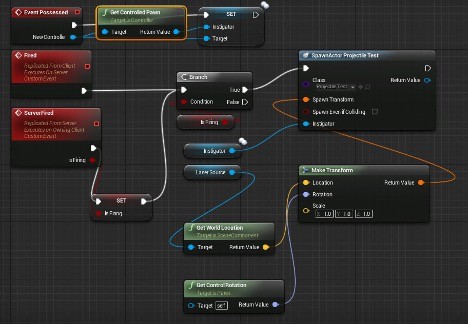
Unreal Engine excels at giving you the means to insert responsive and intuitive player controls. These controls are the vital connection between the player and the virtual world you create. Whether it’s precise movement in a platformer, realistic character interactions in an RPG, or realistic movements in a first-person shooter, Unreal Engine provides the tools to create seamless and immersive player experiences. With Unreal Engine, you can fine-tune everything from character movements to input responses, ensuring that players have a flowing gaming experience. The engine’s flexibility allows you to specify controls for your game’s specific needs, making it easier than ever to create engaging gameplay.
AI Behaviors
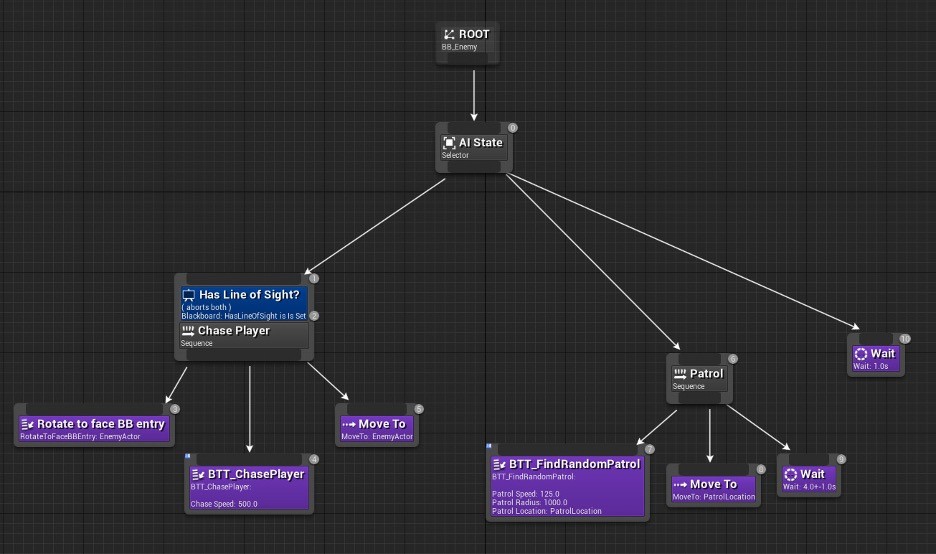
Creating lifelike AI behaviors is very important in modern game design, and Unreal Engine simplifies this complex task. Unreal Engine’s AI systems enable you to design intelligent, adaptive, and challenging opponents or companions for your players. These AI systems can make your game world come alive with non-player characters (NPCs) that respond realistically to the player’s actions. Unreal Engine’s AI capabilities include pathfinding, decision-making, and complex interactions with the game environment. This enriches the depth and complexity of your game, allowing you to craft engaging single-player games or challenging multiplayer campaigns.
Visual Scripting with Blueprints
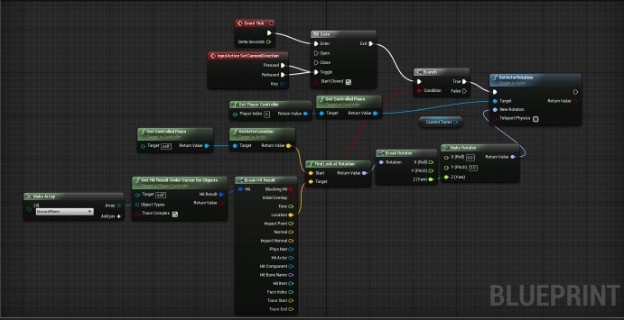
Unreal Engine’s visual scripting, known as Blueprints, is a game-changer for those who want to create interactive elements without delving into extensive coding. Blueprints provide a visual and node-based interface that allows you to design game logic, behaviours, and interactions with ease. This feature is especially valuable for developers who may not have a strong programming background. With Blueprints, you can create complex game mechanics, design interactive puzzles, and bring your game concepts to life without writing extensive lines of code. It’s a powerful tool that opens up game development and encourages creative and accessible experimentation.
Creating Multiplayer Experiences
Multiplayer experiences are becoming increasingly popular in the gaming industry, and Unreal Engine provides robust tools to help you build them. Whether you're developing a cooperative adventure or a competitive shooter, Unreal Engine’s multiplayer capabilities allow you to create seamless, engaging multiplayer experiences. To start building multiplayer games, you'll need to understand the basics of networking, server management, and player synchronization within Unreal Engine. This can be complex, but it’s manageable with the right resources. For a comprehensive guide, check out our article on How to Create Multiplayer Unreal Engine Experiences. This guide will walk you through the process, from setting up your network to optimizing gameplay for multiple players.
Enhancing Unreal Engine with Plugins and Assets
Unreal Engine’s core features are powerful, but to truly unlock its full potential, you can extend its capabilities with plugins and assets. These additional tools can significantly enhance your development process, streamline your workflow, and add new functionalities to your projects.
Using Plugins to Extend Capabilities
Plugins are a fantastic way to add specialized features to Unreal Engine without needing to build them from scratch. Whether you need advanced AI behaviors, enhanced physics simulations, or custom shaders, there’s likely a plugin that fits your needs. By integrating plugins, you can expand Unreal Engine’s already impressive toolkit, allowing you to create more complex and polished games.
For a curated list of some of the most powerful and useful plugins, check out our guide on the Best Unreal Engine Plugins. This resource will help you find the right plugins to elevate your project.
Leveraging Marketplace Assets
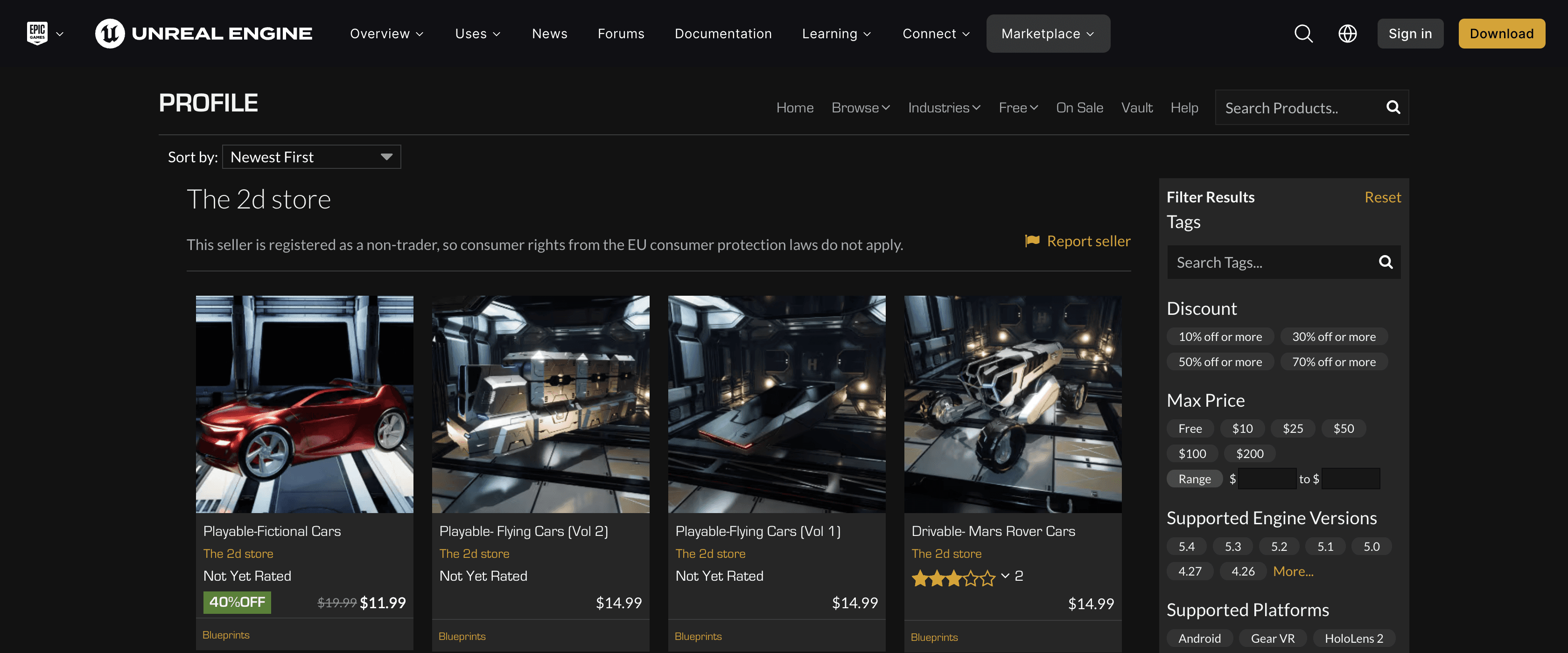
The Unreal Engine Marketplace is a treasure trove of assets that can save you countless hours of development time. From 3D models and textures to sound effects and animation packs, the marketplace offers a wide range of assets that can be easily integrated into your project. By leveraging these assets, you can focus more on the creative aspects of your game rather than getting bogged down in creating every element from scratch.
To help you find the most valuable assets for your project, we’ve compiled a list of the Best Unreal Engine Assets. These assets can jumpstart your development process and enhance the overall quality of your game.
Combining Plugins and Assets for Maximum Impact
The true power of Unreal Engine comes when you combine the right plugins with high-quality assets. This combination allows you to create sophisticated game mechanics, stunning visuals, and immersive audio experiences with minimal effort. Whether you’re an indie developer or part of a large studio, using plugins and marketplace assets strategically can dramatically increase your productivity and the quality of your final product.
By enhancing Unreal Engine with these tools, you’ll not only streamline your workflow but also open up new possibilities for innovation and creativity in your projects.
Optimizing Game Performance
Ensuring that your game runs smoothly and efficiently is paramount to player satisfaction. Unreal Engine equips you with optimization techniques that can significantly enhance the overall performance of your game, making it a polished and enjoyable experience for your players.
Level of Detail (LOD)

Managing the level of detail in your game is important for optimizing performance. Unreal Engine’s LOD techniques allow you to render objects and assets with varying levels of detail based on the player’s distance from them. This dynamic adjustment ensures that the game uses resources efficiently, resulting in better frame rates and reduced memory use. By implementing LOD techniques, you can strike a balance between visual quality and performance, ensuring that your game remains visually stunning while running smoothly on all platforms.
Occlusion Culling

Occlusion culling is a technique used to improve performance by rendering only what is visible to the player. Unreal Engine’s occlusion culling systems automatically determine which objects and parts of the game world are hidden from the player’s view and exclude them from rendering. This process significantly reduces the processing load on the hardware, leading to smoother gameplay. Unreal Engine’s built-in occlusion culling mechanisms simplify the process, allowing you to focus on creating a captivating game world without worrying about performance issues related to unnecessary rendering.
Asset Optimization

Optimizing assets is another important part of enhancing game performance. Unreal Engine provides tools and guidelines for optimizing 3D models, textures, audio files, and other assets to reduce memory usage and improve overall game performance. By optimizing assets, you can create a more efficient game that loads faster, consumes less system resources, and delivers a superior gaming experience. Unreal Engine’s asset optimization features streamline this process, ensuring that your game remains accessible to a larger audience without sacrificing quality. Using these gameplay mechanics and optimization techniques in Unreal Engine will empower you to make games that not only look stunning but also run smoothly, providing players with unforgettable and enjoyable experiences. Whether you’re creating a fast-paced action game or an immersive open-world adventure, Unreal Engine offers the tools and knowledge to turn your vision into reality. And if you're planning to stream your Unreal Engine project to other devices or browsers, be sure to optimize your experience before implementing pixel streaming to ensure smooth performance and maximum quality across all platforms. Optimize Unreal Engine's Performance on a High-Powered Cloud with Vagon. Vagon’s high-performance remote desktops offer the ideal environment for you to optimize your Unreal Engine projects to their fullest, free from any system limitations. Dive deep into the world of game development, architectural visualization, and more without any hardware barriers.
Enhancing Unreal Engine’s Capabilities
To take full advantage of Unreal Engine, consider using plugins and marketplace assets to enhance its capabilities. These resources can add new features and functionalities to your game development toolkit.
Efficient Workflow and Deployment
Maintaining an organized game development workflow is essential. Unreal Engine offers tips for efficient project organization, asset management, and version control. You’ll also learn how to package and deploy your games for different platforms, including PCs, consoles, and mobile devices.
Case Studies and Real-World Applications
Unreal Engine isn’t just a tool for aspiring game developers—it’s a powerhouse used by industry leaders across various fields to create cutting-edge projects that push the boundaries of what's possible. Let’s explore some real-world applications and success stories that highlight the versatility and impact of Unreal Engine.
Game Development: Industry Leaders at the Forefront
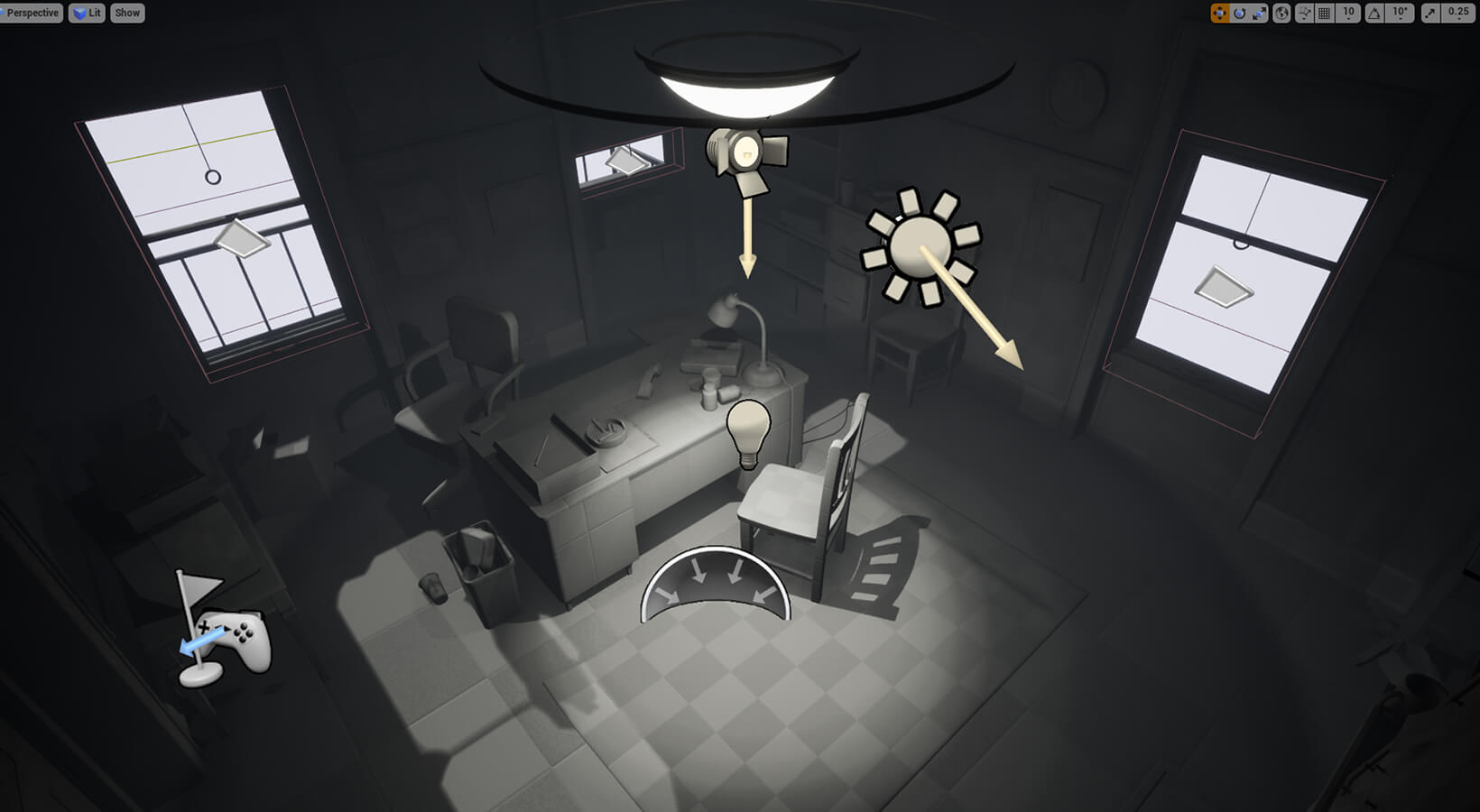
Unreal Engine has been the driving force behind some of the most successful and visually stunning games in the industry. Major game development companies like Epic Games, CD Projekt Red, and Respawn Entertainment have leveraged Unreal Engine to create blockbuster titles that have captivated millions of players worldwide.
For instance, Epic Games, the creators of Fortnite, have continuously pushed the boundaries of what’s possible in online multiplayer gaming, setting new standards for the industry. CD Projekt Red’s The Witcher 3 also showcases Unreal Engine’s capability to handle expansive, richly detailed open-world environments that offer players an immersive experience.
To learn more about the top companies using Unreal Engine and the impact they’ve made in the gaming industry, check out our detailed guide on the Top Unreal Engine Game Dev Companies.
Architectural Visualization: Bringing Blueprints to Life

Beyond gaming, Unreal Engine is transforming the field of architectural visualization. Architects and designers are using Unreal Engine to create highly realistic, interactive models of their projects. These models allow clients to take virtual tours of buildings before they’re constructed, providing a clear and immersive way to experience designs in real-time. Companies like Zaha Hadid Architects have adopted Unreal Engine to create stunning visualizations that not only impress clients but also streamline the design process.
Film and TV: Revolutionizing Visual Effects
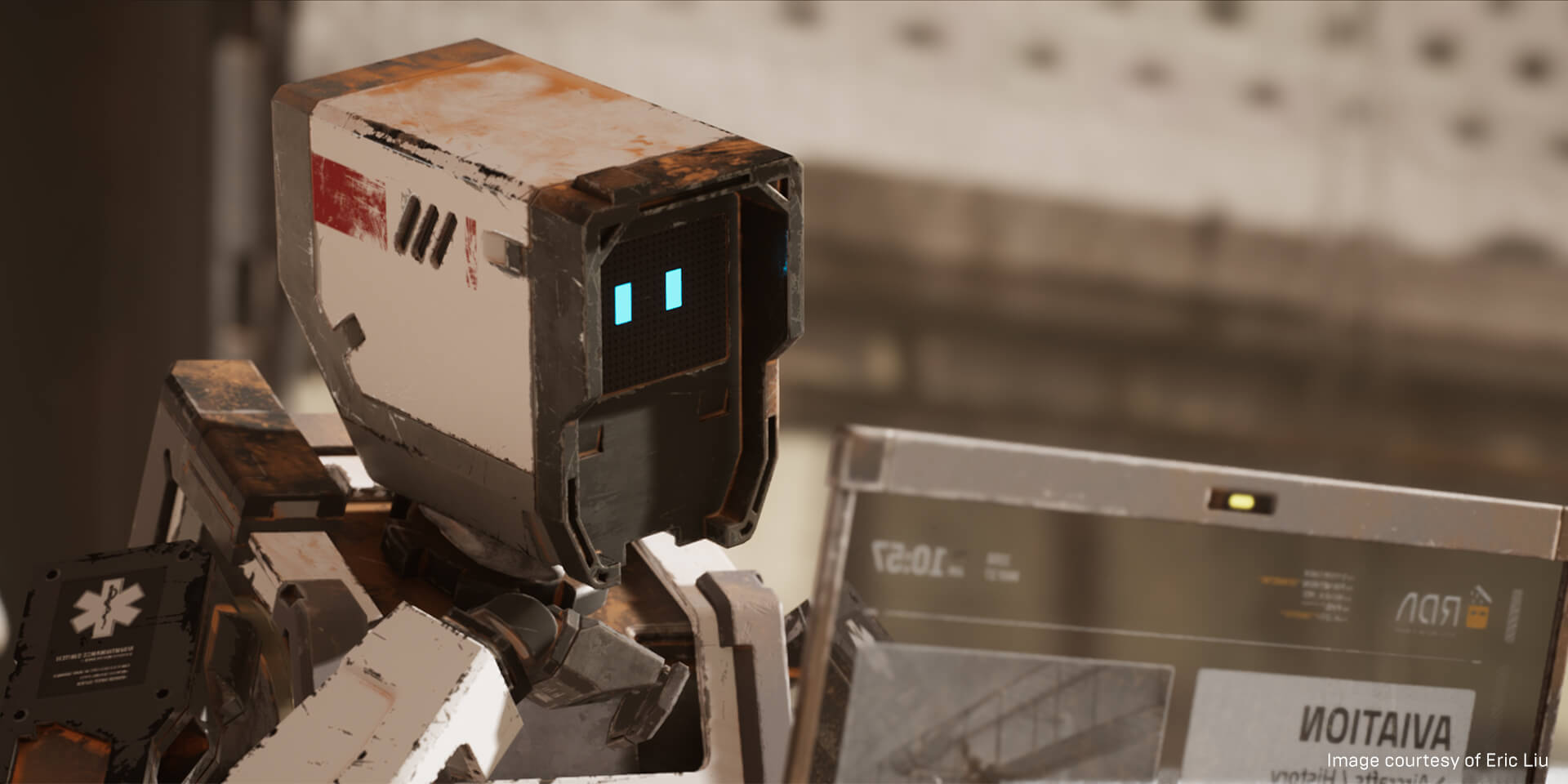
Unreal Engine is also making waves in the film and television industry, where it’s being used to create real-time visual effects and virtual production environments. Productions like The Mandalorian have used Unreal Engine’s real-time rendering capabilities to create dynamic, photorealistic environments, blending seamlessly with live-action footage. This technology is changing the way films are made, allowing for greater creativity and flexibility during the production process.
Automotive Design: Driving Innovation

In the automotive industry, companies like BMW and McLaren are utilizing Unreal Engine to design and visualize their vehicles in stunning detail. Unreal Engine allows designers to create virtual prototypes that can be tested and refined before a single physical model is built. This not only saves time and resources but also enables more innovative design solutions.
Education and Training: Immersive Learning Environments

Unreal Engine is also being used to create immersive training simulations and educational tools. These applications range from medical training, where students can practice procedures in a safe, controlled environment, to military simulations that prepare personnel for real-world scenarios. The engine’s ability to render highly realistic environments in real-time makes it ideal for these applications, offering learners an unparalleled level of immersion.
Conclusion
Unreal Engine is a powerful and versatile game development engine that offers aspiring developers, studios, and enthusiasts the opportunity to create immersive and visually stunning games. Whether you’re new to game development or looking to expand your skills, mastering Unreal Engine can open doors to exciting opportunities in the industry. As you continue to explore Unreal Engine and its capabilities, you’ll be on your way to creating your own high-quality video games and contributing to the ever-evolving world of game development. Embrace the possibilities that Unreal Engine offers, and start your journey today!
Introduction
Unreal Engine is a clear leader in the world of digital creation, extending far beyond just game development. Whether you're an aspiring game developer, an established studio, or a tech enthusiast looking to expand your skill set, mastering Unreal Engine opens up a world of possibilities. This guide will explore the importance of Unreal Engine across various industries, providing a comprehensive walkthrough for everyone—from beginners to advanced developers. Whether you’re searching for an Unreal Engine tutorial, a complete guide, or just want to dive deeper into this powerful engine, you’re in the right place.
The Evolution and Importance of Unreal Engine
Unreal Engine has come a long way since its initial release in 1998. What began as a groundbreaking tool for the first-person shooter Unreal has evolved into one of the most powerful and versatile game engines available today. Over the years, Unreal Engine has continuously pushed the boundaries of what’s possible in digital content creation, making a significant impact across multiple industries.
A Brief History

Unreal Engine’s journey started with its debut in the gaming industry, where it quickly gained popularity for its ability to create immersive, high-quality visuals and complex gameplay mechanics. The engine’s success in gaming laid the foundation for its expansion into other fields. Today, Unreal Engine is not only a staple in game development but also a key player in industries like architectural visualization and virtual reality (VR).
Expanding Beyond Gaming
While Unreal Engine remains a favorite among game developers, its applications have broadened dramatically. In the world of architectural visualization, Unreal Engine allows architects and designers to create photorealistic renderings and interactive environments, offering clients a virtual tour of their projects before construction even begins.
In the realm of virtual reality, Unreal Engine is setting new standards. Its real-time rendering capabilities and flexibility make it ideal for creating immersive VR experiences, from gaming to educational simulations.
Industry Impact
Unreal Engine’s influence is evident in the gaming industry from the games developed using this engine, but its impact goes far beyond gaming. The engine is increasingly being used in film production, automotive design, and even live events, thanks to its ability to render stunning visuals in real-time.
As Unreal Engine continues to evolve, its importance across various industries only grows. Whether you’re creating the next big game, designing an architectural masterpiece, or building a cutting-edge VR experience, Unreal Engine provides the tools and flexibility needed to bring your vision to life.
Benefits of Mastering Unreal Engine
Mastering Unreal Engine opens up a world of possibilities, not just for game developers but for creators across various industries. Whether you're crafting AAA games, architectural visualizations, or immersive VR experiences, Unreal Engine provides the tools you need to bring your visions to life. Here are some key benefits and applications of this remarkable engine:
Extensive Customizability: Unreal Engine is celebrated for its extensive and easy customizability. It gives developers a vast range of tools to create exceptional-quality content, whether you're working on a major game or a small project.
Cross-Platform Development: Unreal Engine supports multiple platforms, making it a versatile choice for developing content for various devices. From consoles to mobile devices, and even VR headsets, Unreal Engine ensures your project reaches its audience.
Industry-Leading Graphics: Unreal Engine is renowned for its out-of-this-world graphic quality, crucial for creating visually stunning and immersive experiences. Its advanced rendering capabilities make it the top choice for anyone aiming to deliver high-fidelity visuals.
User-Friendly Visual Scripting: Unreal Engine’s Blueprints feature allows developers to create interactive elements without the need for extensive coding. It’s an excellent resource for both beginners and experienced developers, enabling rapid prototyping and creative experimentation.
Real-Time Photorealistic Rendering: Unreal Engine excels at real-time photorealistic rendering, making it ideal for creating visually stunning and realistic environments while you are actively developing. This capability is especially valuable in fields like architectural visualization and virtual production.
Cloud-Based Performance: With the power of cloud computing, Unreal Engine can now run on virtually any device, eliminating hardware limitations. By leveraging Unreal Engine on Cloud Computer, you can optimize your workflow, collaborate seamlessly with teams, and scale your projects without being tied down by your local machine's specs.
While Unreal Engine offers extensive tools for cross-platform development, it’s worth comparing it to Unity, especially if you're looking to choose the best engine for your specific needs. Explore our comparison guide to see how Unreal stacks up against Unity.
Unreal Engine’s flexibility and power make it a critical tool in the modern creator’s toolkit. Mastering it not only enhances your ability to develop cutting-edge games but also opens doors to new opportunities in fields like architecture, VR, and beyond.
Learning Resources for Unreal Engine

Mastering Unreal Engine opens up endless creative possibilities, whether you're developing games, creating architectural visualizations, or experimenting with virtual reality. To get the most out of Unreal Engine, it’s crucial to leverage the best learning resources available. Below, we’ve compiled a list of top courses, communities, YouTube channels, and official documentation to help you on your journey.
Top Unreal Engine Courses and Classes
For structured learning, online courses are an excellent way to build your skills. Whether you’re a beginner or looking to advance your knowledge, our curated list of the top courses enables mastering Unreal Engine, as it covers everything from the basics to advanced techniques. These courses provide step-by-step guidance and are designed to help you master Unreal Engine at your own pace.
Official Documentation
The Unreal Engine Documentation is the ultimate resource for developers at any level. It offers comprehensive guides on every aspect of the engine, from basic setup to advanced scripting. The documentation is frequently updated and maintained by Epic Games, ensuring that you have access to the latest features and best practices.
YouTube Channels
Visual learners often benefit from video tutorials, and there are several YouTube channels dedicated to Unreal Engine:
- Unreal Engine: The official Unreal Engine YouTube channel provides tutorials, live streams, and showcases of community projects. It’s a must-subscribe for anyone serious about learning Unreal Engine.
- Virtus Learning Hub: This channel offers a wide range of tutorials on Unreal Engine, covering topics from beginner basics to advanced game development techniques.
- Matt Aspland: Known for his concise and clear tutorials, Matt Aspland’s channel is great for learning specific aspects of Unreal Engine, particularly in Blueprints and game mechanics.
- Ryan Laley: Ryan Laley provides daily tutorials that focus on practical game development tips and tricks within Unreal Engine, making it a valuable resource for developers at all levels.
Online Communities

Being part of a community can significantly enhance your learning experience. Here are some of the most active Unreal Engine communities where you can ask questions, share your work, and learn from others:
- Unreal Engine Forums: The official Unreal Engine forums are a great place to connect with other developers, ask questions, and find answers to technical issues.
- Unreal Slackers (Discord): This is one of the largest Discord communities for Unreal Engine developers. It’s a lively space where you can chat with other users, share your progress, and get help in real-time.
- r/unrealengine (Reddit): The Unreal Engine subreddit is an active community where users post everything from tutorials and resources to questions and project showcases.
- ArtStation’s Unreal Engine Community: While ArtStation is primarily known as a portfolio site, it also has a strong community of Unreal Engine artists who share tips, tutorials, and feedback.
By utilizing these resources, you can accelerate your learning and become proficient in Unreal Engine more quickly. Whether you prefer structured courses, official documentation, community interaction, or video tutorials, there’s a wealth of knowledge available to help you on your journey.
Getting Started with Unreal Engine
Before diving into the details of Unreal Engine, it’s important to get familiar with the basics. Understanding the core components of the engine will set you up for success and help you avoid common pitfalls that beginners often encounter. Here’s what you need to know:
The Unreal Engine Interface

Unreal Engine’s interface is designed to be user-friendly, providing a seamless experience for developers. The key components of the interface include:
Start Menu: The Start Menu offers access to different engine versions and showcases projects created by the user. It also allows users to explore games developed by other creators.
Project Browser: After selecting the engine version, the Project Browser appears. This browser includes pre-modified game levels and enables users to create new projects for game development.
Toolbar: The Toolbar is a personalized section housing various tools and editors. Some of the key options include Quickplay, launch game functions, Blueprint, and Matinee Editor.
Viewport: The Viewport is where users can visualize their game creation. It adapts to the customized level of the game, and by clicking the “PLAY” button, users can interact with the game and view different game levels.
Avoiding Common Beginner Pitfalls
As you start exploring Unreal Engine, it's easy to make mistakes that can slow down your progress. Understanding and avoiding these common pitfalls will help you stay on the right track. For example, beginners often struggle with managing project organization or overcomplicating Blueprints early on. To help you navigate these challenges, we recommend checking out our guide on Top Mistakes Unreal Engine Beginners Make.
By familiarizing yourself with the interface and being aware of common challenges, you'll be better equipped to make the most of Unreal Engine's powerful features from the start.
Unreal Engine Fundamentals
Unreal Engine works through a set of tools and editors, including a graphics engine, online module, physics engine, sound engine, input, and gameplay framework. It provides developers with the means to create and manipulate assets, customize materials, and work with lighting for realistic game visuals. With many solutions to complex problems that are solved,
Essential Game Development Techniques
Once you’ve grasped the basics of Unreal Engine, it’s time to dive into game development techniques. Unreal Engine offers a wide range of tools and features to help you bring your creative vision to life. Here are some of the key techniques you’ll need:
3D Modeling

Creating 3D models is a fundamental part of game development. Unreal Engine provides robust tools and editors to design and manipulate 3D assets, allowing you to enhance the quality and detail of your game environments and characters. Whether you’re sculpting intricate characters or designing expansive landscapes, Unreal Engine has the capabilities to support your vision.
For those who also use Blender in their workflow, it’s worth exploring how Unreal Engine compares to Blender in terms of 3D modeling capabilities. Our Unreal Engine vs Blender Comparison Guide offers insights into the strengths of each tool, helping you choose the best one for your specific needs.
Animation
Unreal Engine streamlines the animation process by offering built-in systems that smoothly integrate with other parts of the engine. This integration eliminates the need to import animations from external sources, saving you time and ensuring that your animations are perfectly in sync with your game’s mechanics. From character movements to environmental interactions, Unreal Engine’s animation tools help you create fluid, lifelike animations.
Level Design
Level design is a critical aspect of creating dynamic and engaging game environments. Unreal Engine provides powerful tools to build and customize levels, allowing you to craft visually appealing and immersive worlds. Whether you're designing a simple arena or a complex open world, Unreal Engine’s level design tools give you the flexibility to create environments that enhance gameplay and captivate players.
Exporting and Importing Assets
In the game development process, it’s often necessary to move assets between different tools. Unreal Engine makes it easy to export and import assets, ensuring that your workflow remains smooth and efficient. Whether you're transitioning assets from Blender, Unity, or SketchUp, Unreal Engine supports seamless integration.
For detailed guidance on how to export assets between these tools and Unreal Engine, check out our guide on How to Export Assets from Blender to Unity, SketchUp, and Unreal Engine. This resource will help you maintain asset fidelity and streamline your development process.
By mastering these game development techniques, you’ll be well-equipped to create high-quality, immersive games that stand out in the competitive gaming industry.
Implementing Gameplay Mechanics
Unreal Engine empowers game developers with a comprehensive set of tools and capabilities to breathe life into their games and make them incredibly realistic. We’ll explore some of the gameplay mechanics that Unreal Engine offers, enhancing the depth and interactivity of your games.
Player Controls

Unreal Engine excels at giving you the means to insert responsive and intuitive player controls. These controls are the vital connection between the player and the virtual world you create. Whether it’s precise movement in a platformer, realistic character interactions in an RPG, or realistic movements in a first-person shooter, Unreal Engine provides the tools to create seamless and immersive player experiences. With Unreal Engine, you can fine-tune everything from character movements to input responses, ensuring that players have a flowing gaming experience. The engine’s flexibility allows you to specify controls for your game’s specific needs, making it easier than ever to create engaging gameplay.
AI Behaviors

Creating lifelike AI behaviors is very important in modern game design, and Unreal Engine simplifies this complex task. Unreal Engine’s AI systems enable you to design intelligent, adaptive, and challenging opponents or companions for your players. These AI systems can make your game world come alive with non-player characters (NPCs) that respond realistically to the player’s actions. Unreal Engine’s AI capabilities include pathfinding, decision-making, and complex interactions with the game environment. This enriches the depth and complexity of your game, allowing you to craft engaging single-player games or challenging multiplayer campaigns.
Visual Scripting with Blueprints

Unreal Engine’s visual scripting, known as Blueprints, is a game-changer for those who want to create interactive elements without delving into extensive coding. Blueprints provide a visual and node-based interface that allows you to design game logic, behaviours, and interactions with ease. This feature is especially valuable for developers who may not have a strong programming background. With Blueprints, you can create complex game mechanics, design interactive puzzles, and bring your game concepts to life without writing extensive lines of code. It’s a powerful tool that opens up game development and encourages creative and accessible experimentation.
Creating Multiplayer Experiences
Multiplayer experiences are becoming increasingly popular in the gaming industry, and Unreal Engine provides robust tools to help you build them. Whether you're developing a cooperative adventure or a competitive shooter, Unreal Engine’s multiplayer capabilities allow you to create seamless, engaging multiplayer experiences. To start building multiplayer games, you'll need to understand the basics of networking, server management, and player synchronization within Unreal Engine. This can be complex, but it’s manageable with the right resources. For a comprehensive guide, check out our article on How to Create Multiplayer Unreal Engine Experiences. This guide will walk you through the process, from setting up your network to optimizing gameplay for multiple players.
Enhancing Unreal Engine with Plugins and Assets
Unreal Engine’s core features are powerful, but to truly unlock its full potential, you can extend its capabilities with plugins and assets. These additional tools can significantly enhance your development process, streamline your workflow, and add new functionalities to your projects.
Using Plugins to Extend Capabilities
Plugins are a fantastic way to add specialized features to Unreal Engine without needing to build them from scratch. Whether you need advanced AI behaviors, enhanced physics simulations, or custom shaders, there’s likely a plugin that fits your needs. By integrating plugins, you can expand Unreal Engine’s already impressive toolkit, allowing you to create more complex and polished games.
For a curated list of some of the most powerful and useful plugins, check out our guide on the Best Unreal Engine Plugins. This resource will help you find the right plugins to elevate your project.
Leveraging Marketplace Assets

The Unreal Engine Marketplace is a treasure trove of assets that can save you countless hours of development time. From 3D models and textures to sound effects and animation packs, the marketplace offers a wide range of assets that can be easily integrated into your project. By leveraging these assets, you can focus more on the creative aspects of your game rather than getting bogged down in creating every element from scratch.
To help you find the most valuable assets for your project, we’ve compiled a list of the Best Unreal Engine Assets. These assets can jumpstart your development process and enhance the overall quality of your game.
Combining Plugins and Assets for Maximum Impact
The true power of Unreal Engine comes when you combine the right plugins with high-quality assets. This combination allows you to create sophisticated game mechanics, stunning visuals, and immersive audio experiences with minimal effort. Whether you’re an indie developer or part of a large studio, using plugins and marketplace assets strategically can dramatically increase your productivity and the quality of your final product.
By enhancing Unreal Engine with these tools, you’ll not only streamline your workflow but also open up new possibilities for innovation and creativity in your projects.
Optimizing Game Performance
Ensuring that your game runs smoothly and efficiently is paramount to player satisfaction. Unreal Engine equips you with optimization techniques that can significantly enhance the overall performance of your game, making it a polished and enjoyable experience for your players.
Level of Detail (LOD)

Managing the level of detail in your game is important for optimizing performance. Unreal Engine’s LOD techniques allow you to render objects and assets with varying levels of detail based on the player’s distance from them. This dynamic adjustment ensures that the game uses resources efficiently, resulting in better frame rates and reduced memory use. By implementing LOD techniques, you can strike a balance between visual quality and performance, ensuring that your game remains visually stunning while running smoothly on all platforms.
Occlusion Culling

Occlusion culling is a technique used to improve performance by rendering only what is visible to the player. Unreal Engine’s occlusion culling systems automatically determine which objects and parts of the game world are hidden from the player’s view and exclude them from rendering. This process significantly reduces the processing load on the hardware, leading to smoother gameplay. Unreal Engine’s built-in occlusion culling mechanisms simplify the process, allowing you to focus on creating a captivating game world without worrying about performance issues related to unnecessary rendering.
Asset Optimization

Optimizing assets is another important part of enhancing game performance. Unreal Engine provides tools and guidelines for optimizing 3D models, textures, audio files, and other assets to reduce memory usage and improve overall game performance. By optimizing assets, you can create a more efficient game that loads faster, consumes less system resources, and delivers a superior gaming experience. Unreal Engine’s asset optimization features streamline this process, ensuring that your game remains accessible to a larger audience without sacrificing quality. Using these gameplay mechanics and optimization techniques in Unreal Engine will empower you to make games that not only look stunning but also run smoothly, providing players with unforgettable and enjoyable experiences. Whether you’re creating a fast-paced action game or an immersive open-world adventure, Unreal Engine offers the tools and knowledge to turn your vision into reality. And if you're planning to stream your Unreal Engine project to other devices or browsers, be sure to optimize your experience before implementing pixel streaming to ensure smooth performance and maximum quality across all platforms. Optimize Unreal Engine's Performance on a High-Powered Cloud with Vagon. Vagon’s high-performance remote desktops offer the ideal environment for you to optimize your Unreal Engine projects to their fullest, free from any system limitations. Dive deep into the world of game development, architectural visualization, and more without any hardware barriers.
Enhancing Unreal Engine’s Capabilities
To take full advantage of Unreal Engine, consider using plugins and marketplace assets to enhance its capabilities. These resources can add new features and functionalities to your game development toolkit.
Efficient Workflow and Deployment
Maintaining an organized game development workflow is essential. Unreal Engine offers tips for efficient project organization, asset management, and version control. You’ll also learn how to package and deploy your games for different platforms, including PCs, consoles, and mobile devices.
Case Studies and Real-World Applications
Unreal Engine isn’t just a tool for aspiring game developers—it’s a powerhouse used by industry leaders across various fields to create cutting-edge projects that push the boundaries of what's possible. Let’s explore some real-world applications and success stories that highlight the versatility and impact of Unreal Engine.
Game Development: Industry Leaders at the Forefront

Unreal Engine has been the driving force behind some of the most successful and visually stunning games in the industry. Major game development companies like Epic Games, CD Projekt Red, and Respawn Entertainment have leveraged Unreal Engine to create blockbuster titles that have captivated millions of players worldwide.
For instance, Epic Games, the creators of Fortnite, have continuously pushed the boundaries of what’s possible in online multiplayer gaming, setting new standards for the industry. CD Projekt Red’s The Witcher 3 also showcases Unreal Engine’s capability to handle expansive, richly detailed open-world environments that offer players an immersive experience.
To learn more about the top companies using Unreal Engine and the impact they’ve made in the gaming industry, check out our detailed guide on the Top Unreal Engine Game Dev Companies.
Architectural Visualization: Bringing Blueprints to Life

Beyond gaming, Unreal Engine is transforming the field of architectural visualization. Architects and designers are using Unreal Engine to create highly realistic, interactive models of their projects. These models allow clients to take virtual tours of buildings before they’re constructed, providing a clear and immersive way to experience designs in real-time. Companies like Zaha Hadid Architects have adopted Unreal Engine to create stunning visualizations that not only impress clients but also streamline the design process.
Film and TV: Revolutionizing Visual Effects

Unreal Engine is also making waves in the film and television industry, where it’s being used to create real-time visual effects and virtual production environments. Productions like The Mandalorian have used Unreal Engine’s real-time rendering capabilities to create dynamic, photorealistic environments, blending seamlessly with live-action footage. This technology is changing the way films are made, allowing for greater creativity and flexibility during the production process.
Automotive Design: Driving Innovation

In the automotive industry, companies like BMW and McLaren are utilizing Unreal Engine to design and visualize their vehicles in stunning detail. Unreal Engine allows designers to create virtual prototypes that can be tested and refined before a single physical model is built. This not only saves time and resources but also enables more innovative design solutions.
Education and Training: Immersive Learning Environments

Unreal Engine is also being used to create immersive training simulations and educational tools. These applications range from medical training, where students can practice procedures in a safe, controlled environment, to military simulations that prepare personnel for real-world scenarios. The engine’s ability to render highly realistic environments in real-time makes it ideal for these applications, offering learners an unparalleled level of immersion.
Conclusion
Unreal Engine is a powerful and versatile game development engine that offers aspiring developers, studios, and enthusiasts the opportunity to create immersive and visually stunning games. Whether you’re new to game development or looking to expand your skills, mastering Unreal Engine can open doors to exciting opportunities in the industry. As you continue to explore Unreal Engine and its capabilities, you’ll be on your way to creating your own high-quality video games and contributing to the ever-evolving world of game development. Embrace the possibilities that Unreal Engine offers, and start your journey today!
Get Beyond Your Computer Performance
Run applications on your cloud computer with the latest generation hardware. No more crashes or lags.

Trial includes 1 hour usage + 7 days of storage.
Get Beyond Your Computer Performance
Run applications on your cloud computer with the latest generation hardware. No more crashes or lags.

Trial includes 1 hour usage + 7 days of storage.
Get Beyond Your Computer Performance
Run applications on your cloud computer with the latest generation hardware. No more crashes or lags.

Trial includes 1 hour usage + 7 days of storage.
Get Beyond Your Computer Performance
Run applications on your cloud computer with the latest generation hardware. No more crashes or lags.

Trial includes 1 hour usage + 7 days of storage.
Get Beyond Your Computer Performance
Run applications on your cloud computer with the latest generation hardware. No more crashes or lags.

Trial includes 1 hour usage + 7 days of storage.

Ready to focus on your creativity?
Vagon gives you the ability to create & render projects, collaborate, and stream applications with the power of the best hardware.

Vagon Blog
Run heavy applications on any device with
your personal computer on the cloud.
San Francisco, California
Solutions
Vagon Teams
Vagon Streams
Use Cases
Resources
Vagon Blog
How To Run Unreal Engine on a Low-End Device (Even Without GPU)
How To Run Unity 3D On Low-End Laptop (Even Without GPU)
Best Digital Twin Platforms & Software in 2025
How To Run Cinema 4D On Cloud
The Best PC Build For Unity
Picking The Best GPU For Unreal Engine
DJI Terra vs. Agisoft Metashape: Which One Should You Choose?
How To Run SketchUp On Cloud
How To Use Revit On Cloud Computer
Vagon Blog
Run heavy applications on any device with
your personal computer on the cloud.
San Francisco, California
Solutions
Vagon Teams
Vagon Streams
Use Cases
Resources
Vagon Blog
How To Run Unreal Engine on a Low-End Device (Even Without GPU)
How To Run Unity 3D On Low-End Laptop (Even Without GPU)
Best Digital Twin Platforms & Software in 2025
How To Run Cinema 4D On Cloud
The Best PC Build For Unity
Picking The Best GPU For Unreal Engine
DJI Terra vs. Agisoft Metashape: Which One Should You Choose?
How To Run SketchUp On Cloud
How To Use Revit On Cloud Computer
Vagon Blog
Run heavy applications on any device with
your personal computer on the cloud.
San Francisco, California
Solutions
Vagon Teams
Vagon Streams
Use Cases
Resources
Vagon Blog
How To Run Unreal Engine on a Low-End Device (Even Without GPU)
How To Run Unity 3D On Low-End Laptop (Even Without GPU)
Best Digital Twin Platforms & Software in 2025
How To Run Cinema 4D On Cloud
The Best PC Build For Unity
Picking The Best GPU For Unreal Engine
DJI Terra vs. Agisoft Metashape: Which One Should You Choose?
How To Run SketchUp On Cloud
How To Use Revit On Cloud Computer
Vagon Blog
Run heavy applications on any device with
your personal computer on the cloud.
San Francisco, California
Solutions
Vagon Teams
Vagon Streams
Use Cases
Resources
Vagon Blog



